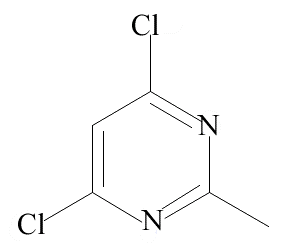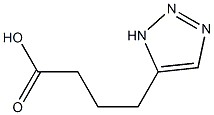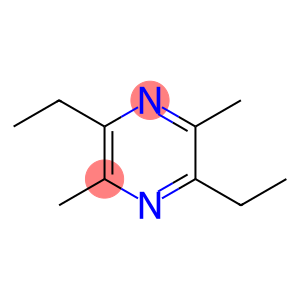4 6-Dichloro-2-methylpyrimidine(CAS# 1780-26-3)
Risk and Safety
| Risk Codes | R34 – Causes burns R51/53 – Toxic to aquatic organisms, may cause long-term adverse effects in the aquatic environment. R43 – May cause sensitization by skin contact R22 – Harmful if swallowed |
| Safety Description | S26 – In case of contact with eyes, rinse immediately with plenty of water and seek medical advice. S36/37/39 – Wear suitable protective clothing, gloves and eye/face protection. S45 – In case of accident or if you feel unwell, seek medical advice immediately (show the label whenever possible.) S61 – Avoid release to the environment. Refer to special instructions / safety data sheets. S36/37 – Wear suitable protective clothing and gloves. |
| UN IDs | UN 3261 8/PG 2 |
| WGK Germany | 3 |
| HS Code | 29335990 |
| Hazard Class | 8 |
| Packing Group | III |
4 6-Dichloro-2-methylpyrimidine(CAS# 1780-26-3) introduction
2-Methyl-4,6-dichloropyrimidine, also known as 2,4,6-trichloropyrimidine or DCM, is an organic compound. The following is an introduction to the properties, uses, preparation methods and safety information of the compound:
Quality:
- Appearance: 2-methyl-4,6-dichloropyrimidine is a white crystal or colorless crystalline powder.
- Solubility: It has low solubility in water but better solubility in organic solvents.
- Chemical properties: It is a highly stable compound that is not prone to decomposition or reaction under conventional chemical reaction conditions.
Use:
- Solvent: 2-Methyl-4,6-dichloropyrimidine is a commonly used organic solvent that is often used in chemical laboratories to dissolve organic compounds, especially those that are insoluble in water.
Method:
- 2-Methyl-4,6-dichloropyrimidine can be obtained by the reaction of 2-methylpyrimidine with chlorine gas. This reaction needs to be carried out under adequate ventilation conditions.
Safety Information:
- 2-Methyl-4,6-dichloropyrimidine is an organic compound with some toxicity. It is irritating and corrosive to the eyes, skin, and respiratory tract. Gloves, goggles, and respiratory protective equipment should be worn during use to ensure adequate ventilation. In case of accidental ingestion or inhalation, seek medical attention immediately.
- 2-Methyl-4,6-dichloropyrimidine poses environmental risks and is toxic to aquatic organisms and soil. When using and disposing of waste, the principle of environmental protection should be followed, and the waste should be disposed of correctly.







![3-[(3-amino-4-methylamino-benzoyl)pyridin-2-yl-amino]-(CAS# 212322-56-0)](https://www.xinchem.com/uploads/33amino4methylaminobenzoylpyridin2ylamino.png)
